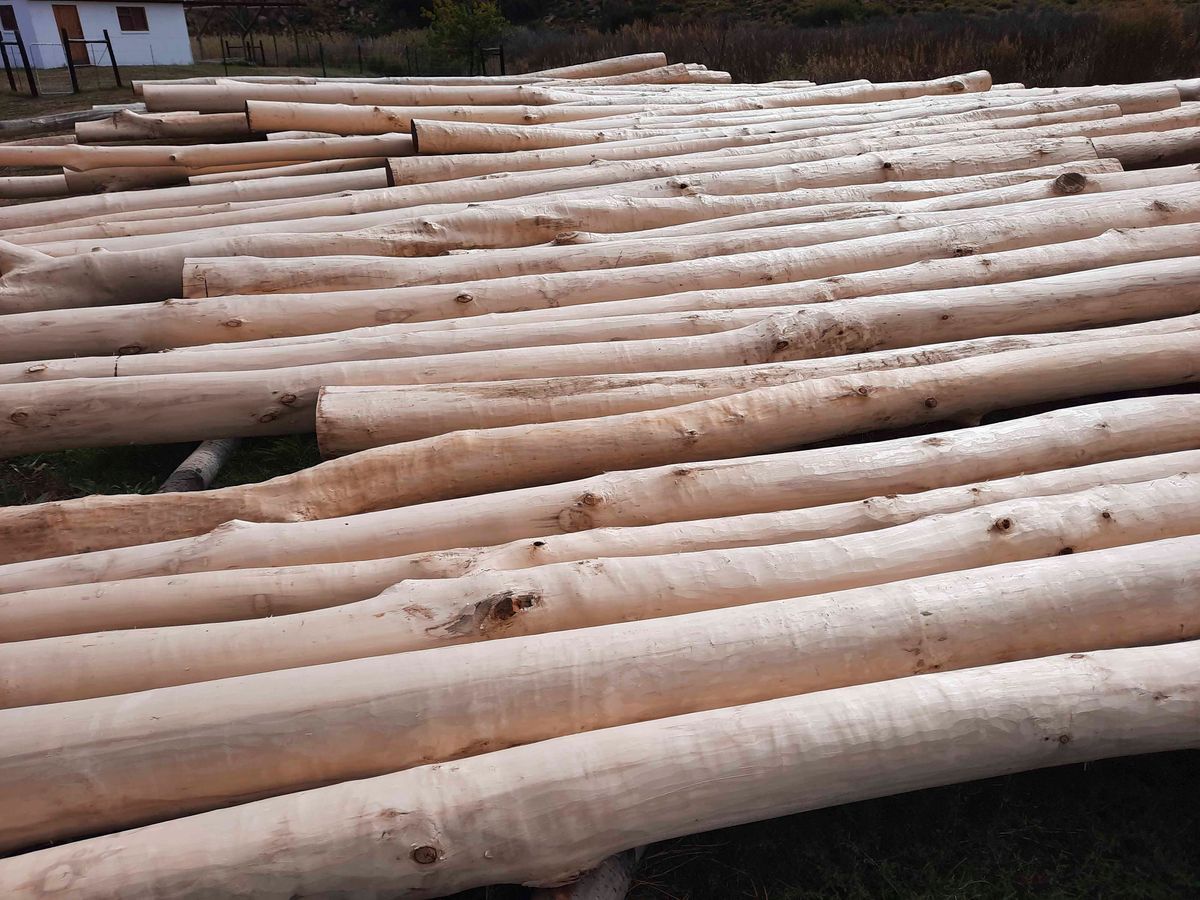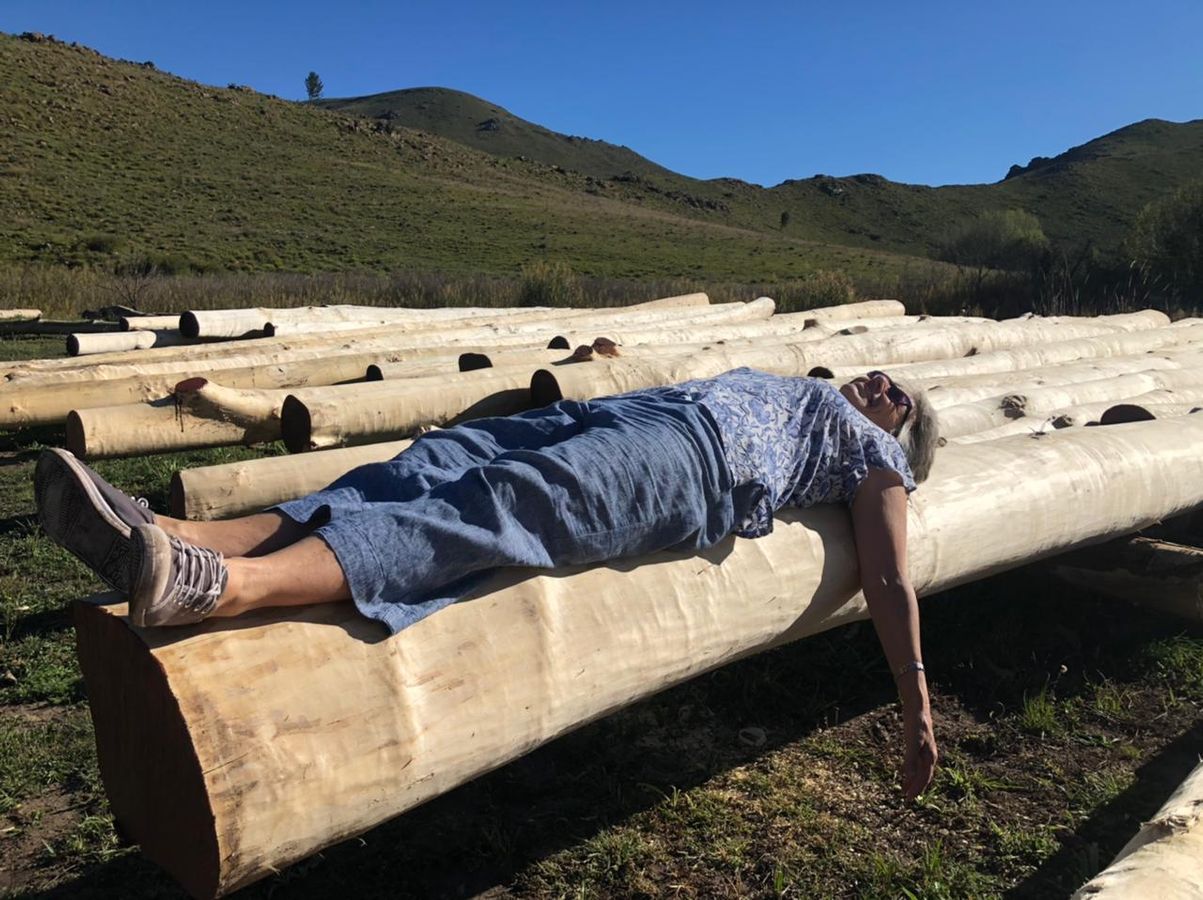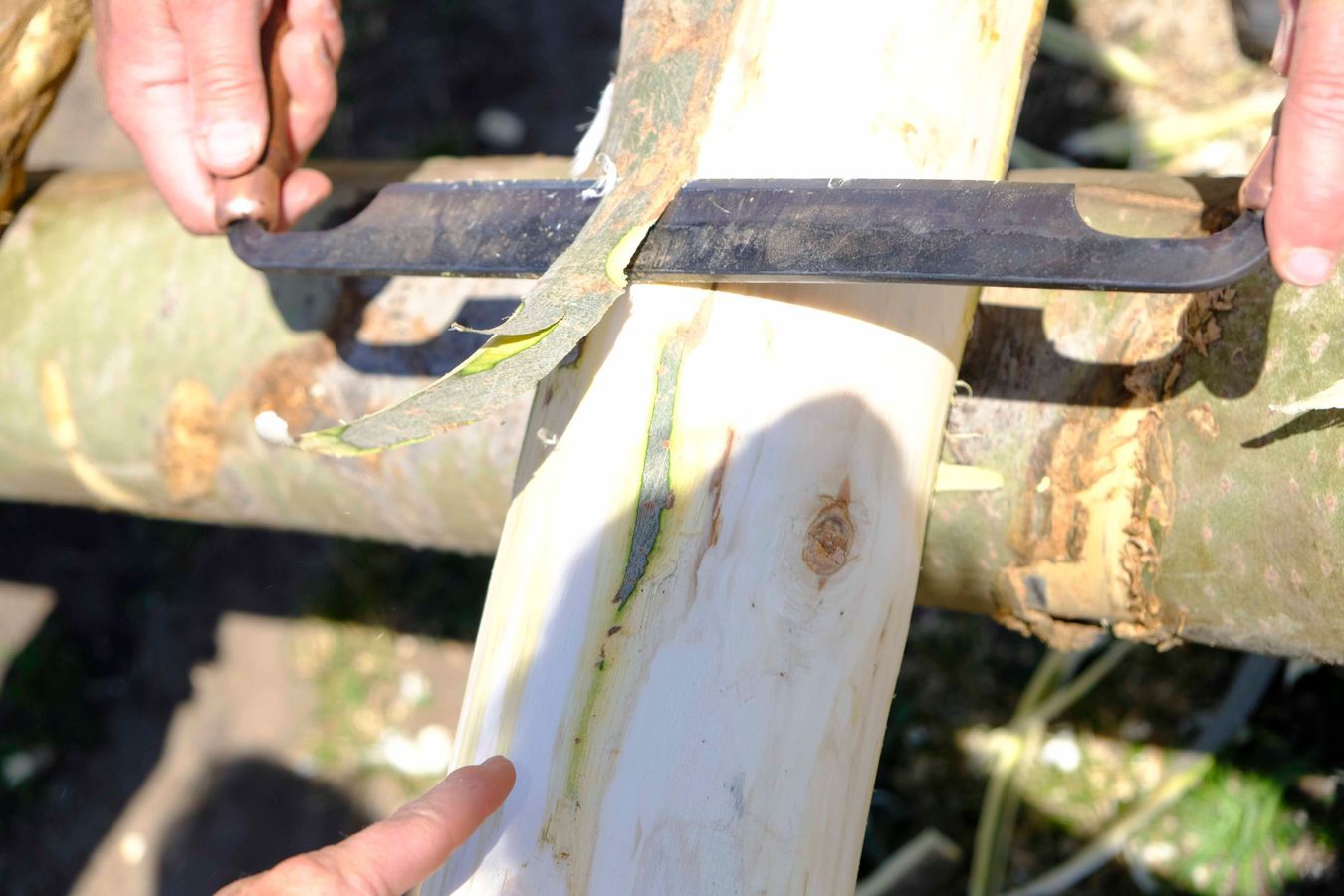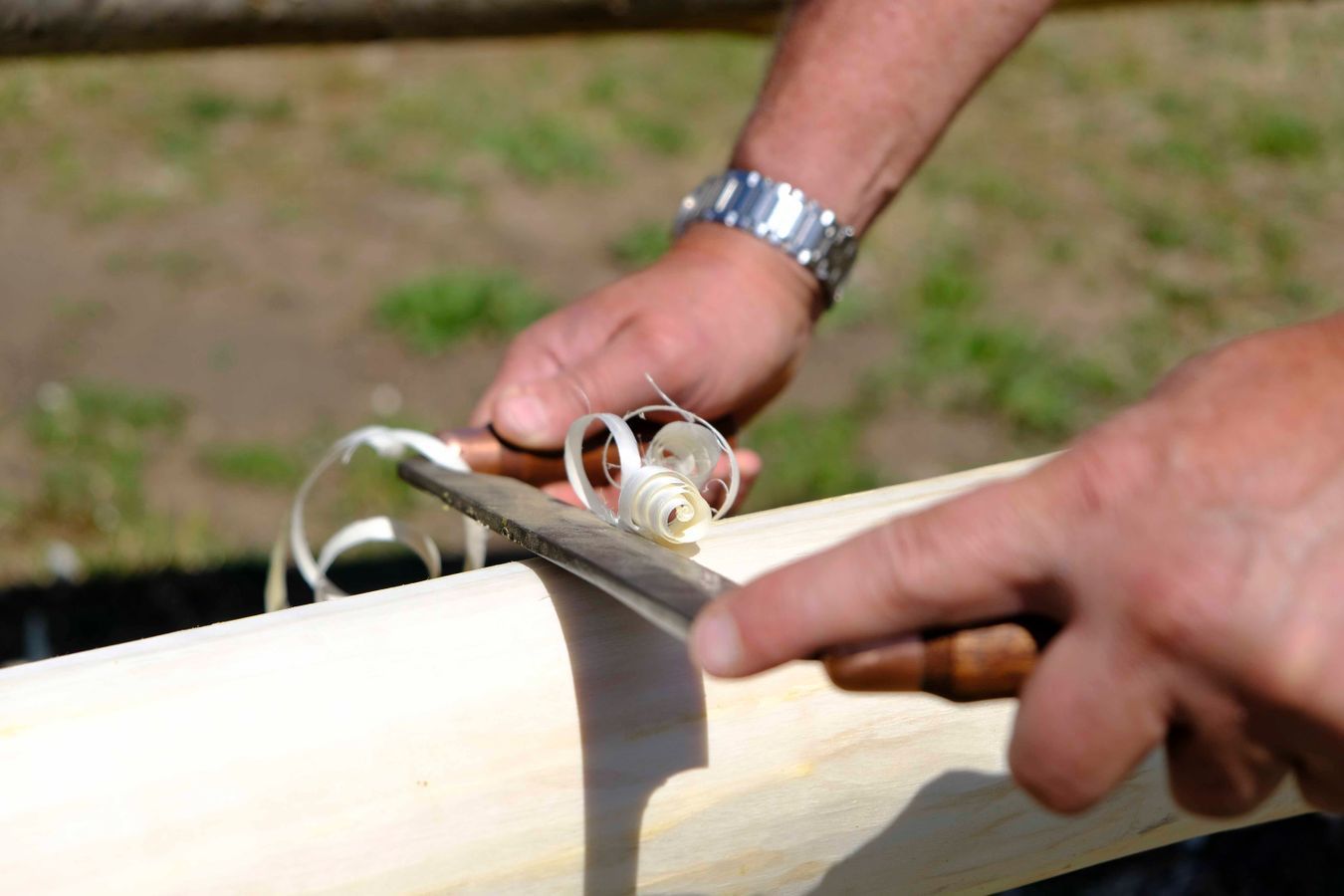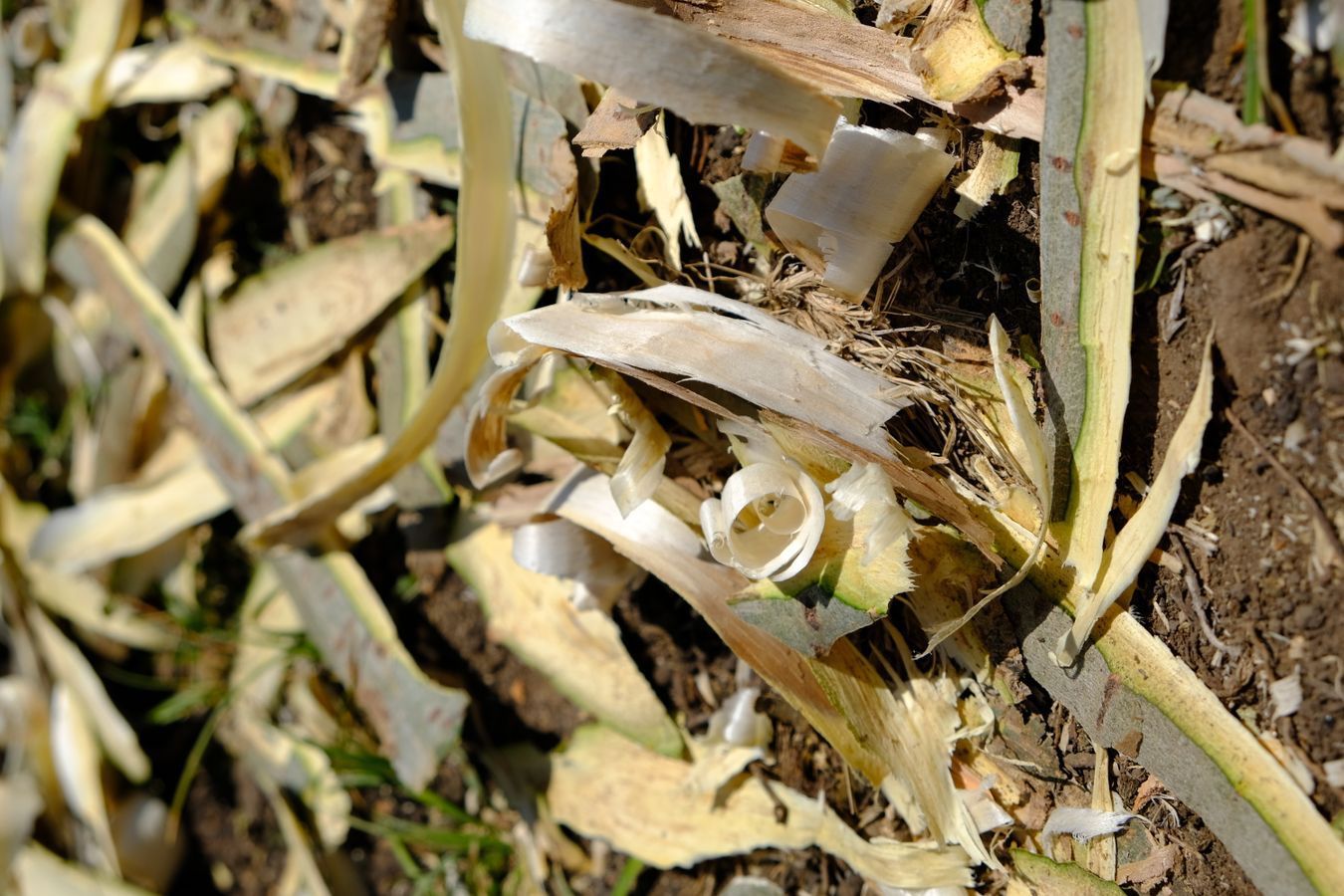I had researched on the internet various methods to debarking trees, in particular poplar trees. The YouTube videos made the process look very easy. You simply slice the bark of the tree longways, lift some bark with a sharp tool, such as a machete, and then peel the entire bark off in one piece. Well, this was wishful thinking. Firstly, we found that the bottom part of the tree consisted of very thick and hard bark. We already noticed this when we planked – so much so that it made our saw blade very blunt in no time. We then resorted to chopping this part of the bark off with an axe before we made the first cut. Secondly, our trees contained many branch knots that made a single peel impossible. So, we resorted to peeling our trees meter by meter.
The other issue that needed research was what type of tools or implements to get. We ended up with an arsenal of tools that consisted of axes, sharpened spades, machetes, five-pound hammers and of course some draw knives. We elaborate on each of these in the tool and jig tab. The selection of the most appropriate tool ultimately depended of the preference of the peeler. Each tool required a unique handling method, and each peeler had a special way of handling the different implements. I first thought that the draw knife would be the default tool as it was very sharp and easy to handle, but it turned out that the machete was actually more versatile as it enabled the peeler to go around the many branches and knots.
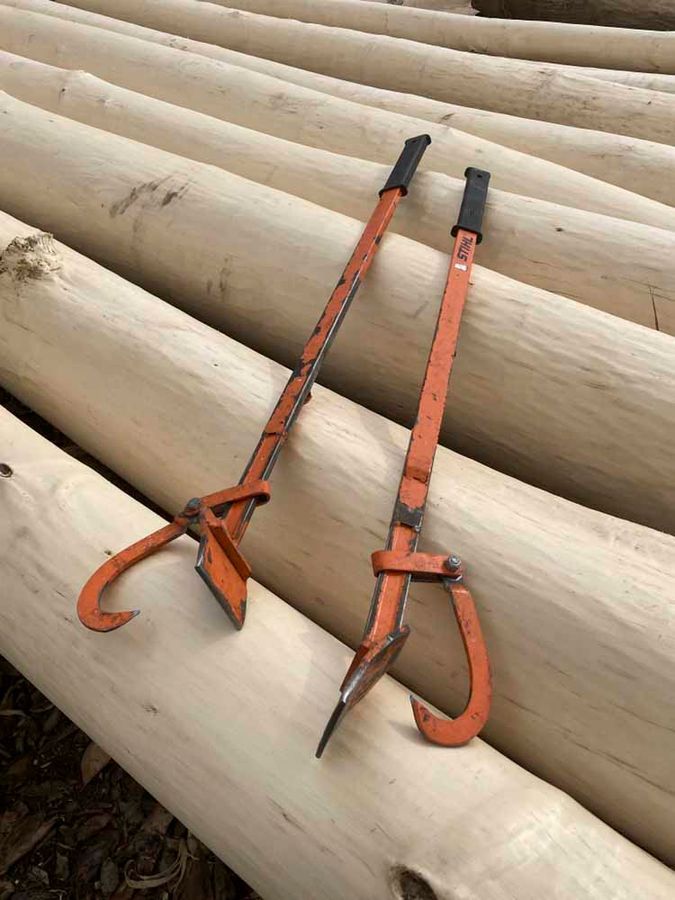
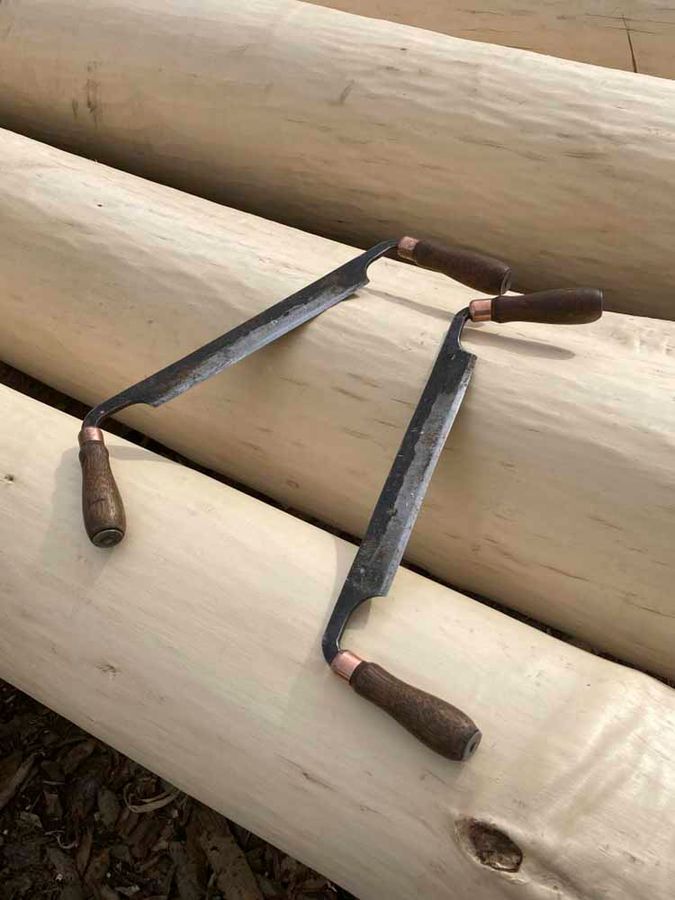
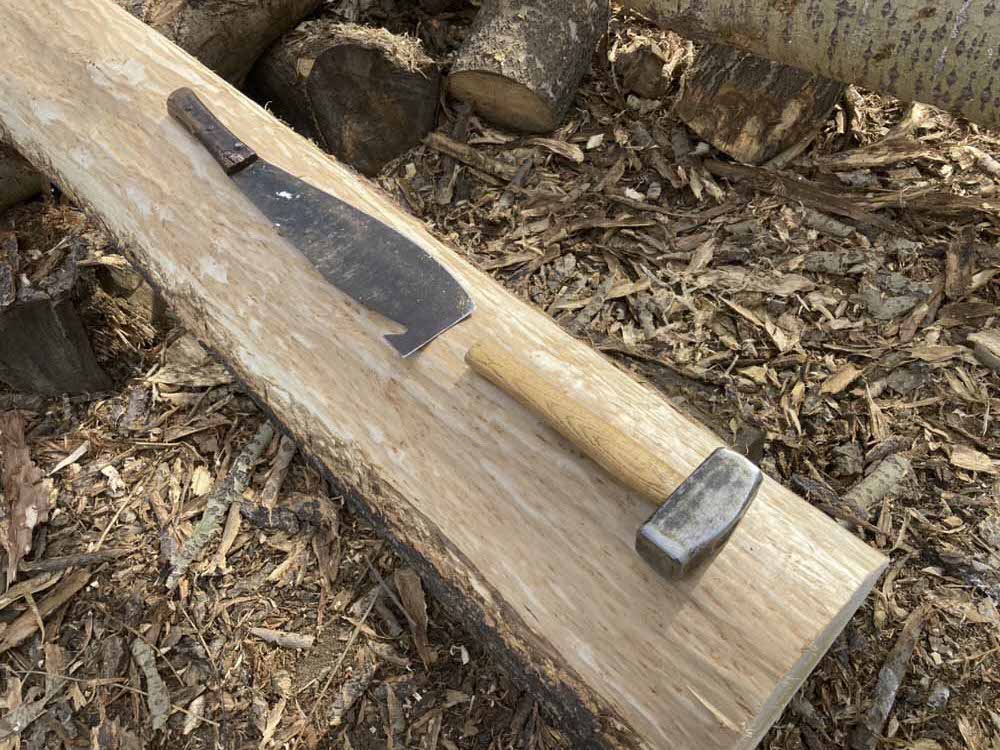
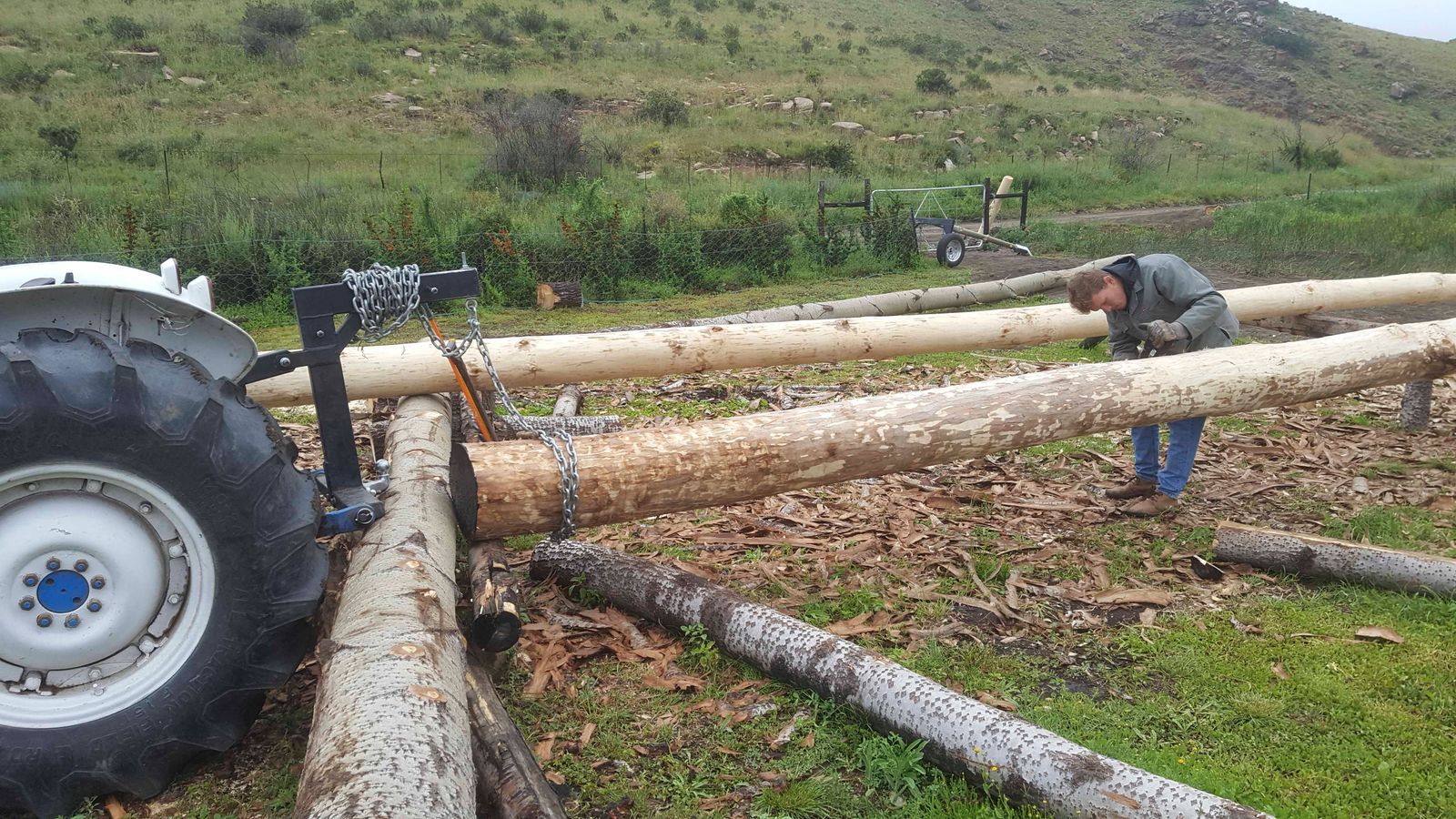
I employed a team of four regular peelers. They all came from the neighbouring farm and soon each member grew attached to his particular peeling implement. Dumisane preferred the draw knife, Siya the machete, Bevan the spade and Anele’s job was to wield the hammer, or the back of the axe, to hammer off the thick bark at the beginning or bottom of the log.
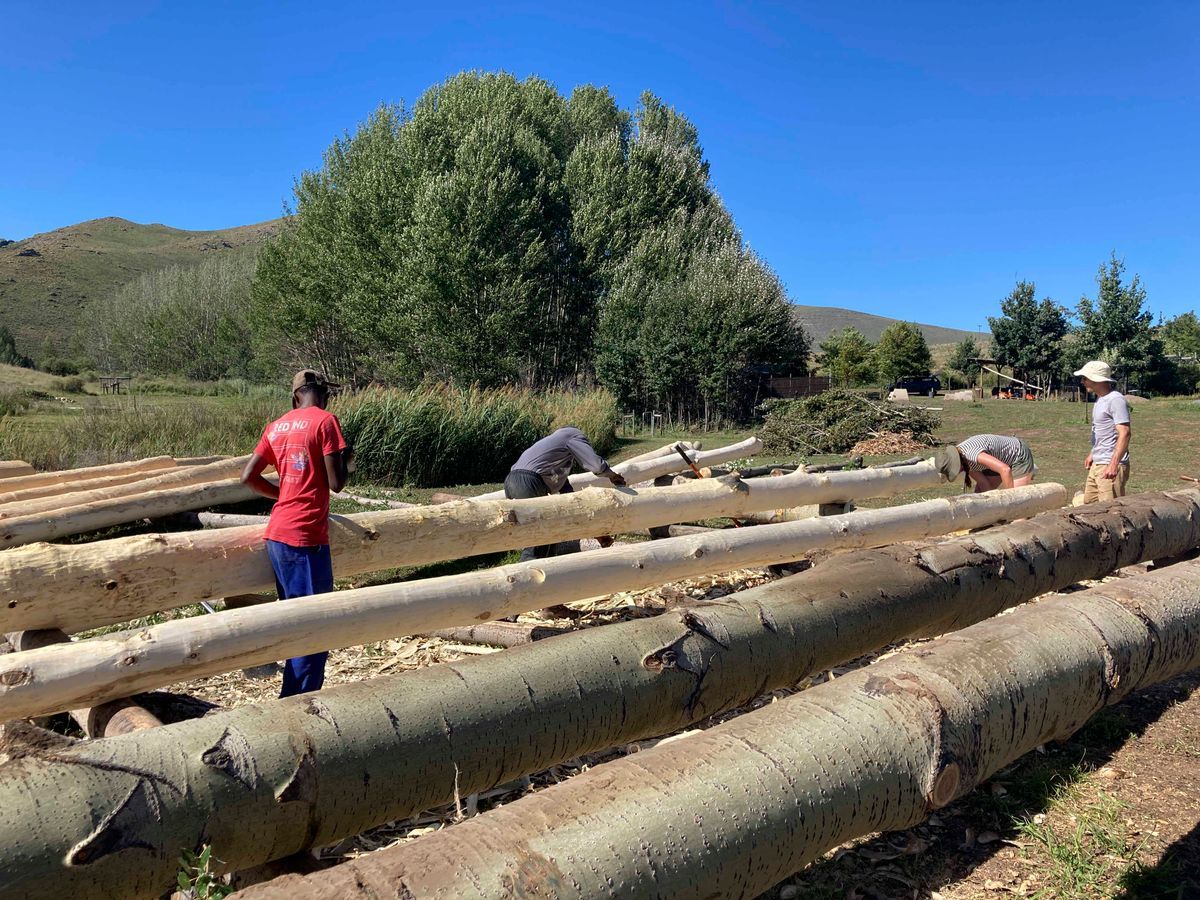
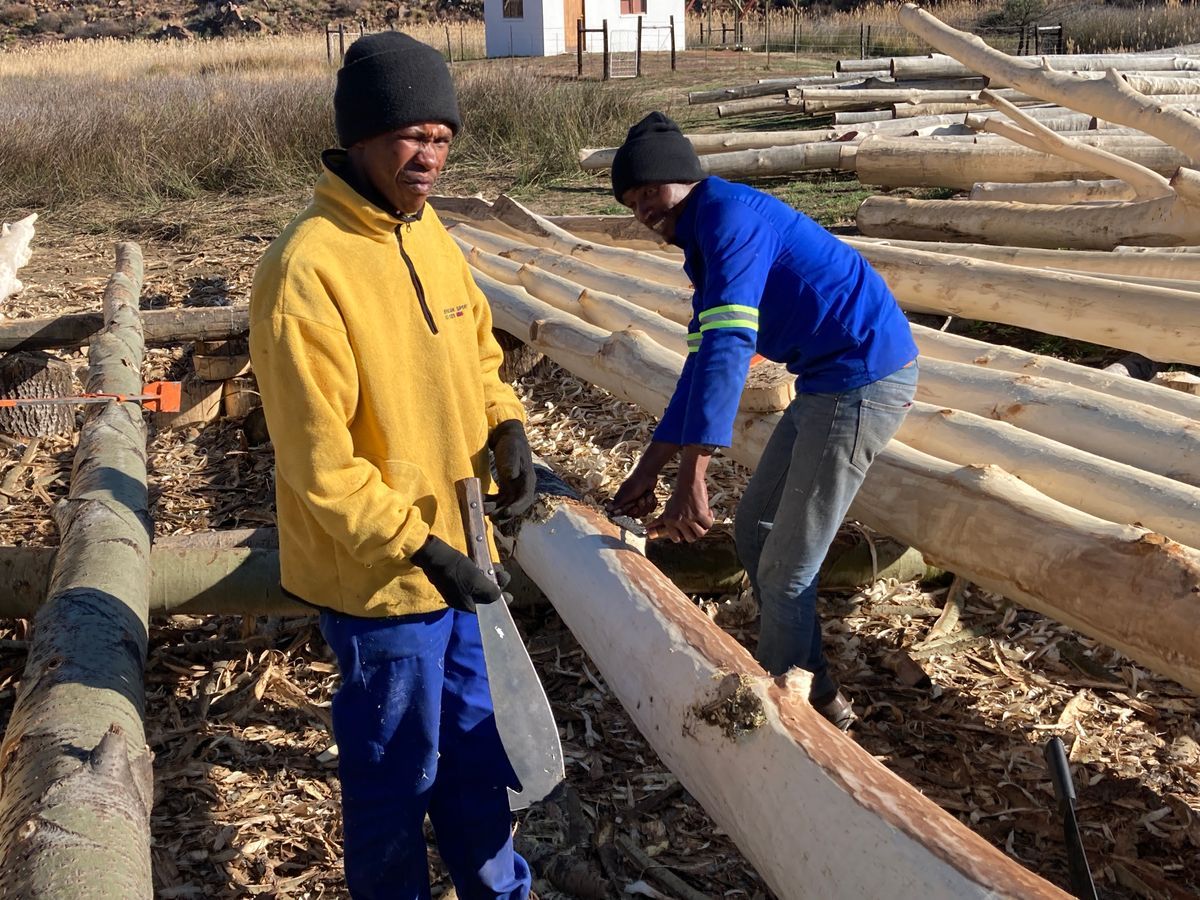
Our building site and debarking station soon attracted quite a number of interested and curious people. Many were neighbours and friends keen to lend a helping hand. Many commented about how therapeutic and satisfying the debarking was. It is all about rhythm and getting into a zen-like meditative mode. One needs to be very methodical and systematic and slowly move along the log. After a while the log needs to be turned 180 degrees with the help of our cant hooks and the process starts all over again. Once all the bark is removed the beauty of each tree is revealed. It is smooth, dripping wet, shiny and glossy, and very satin-like to the touch. The curves and shapes of each tree make it a work of art, and one can only imagine how the final cabin will look like once each log is in place – hopefully also a work of art.
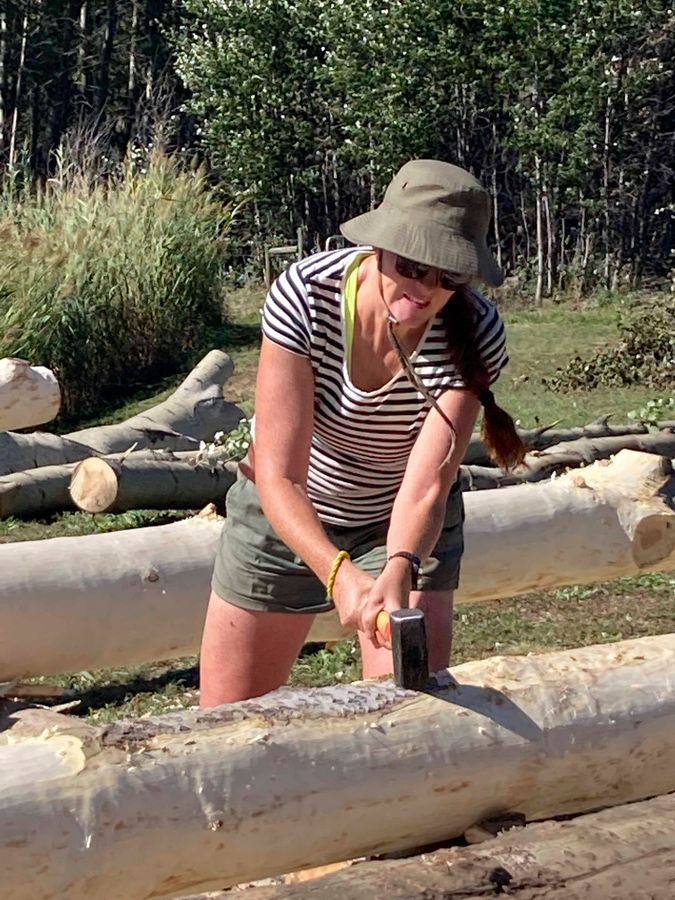
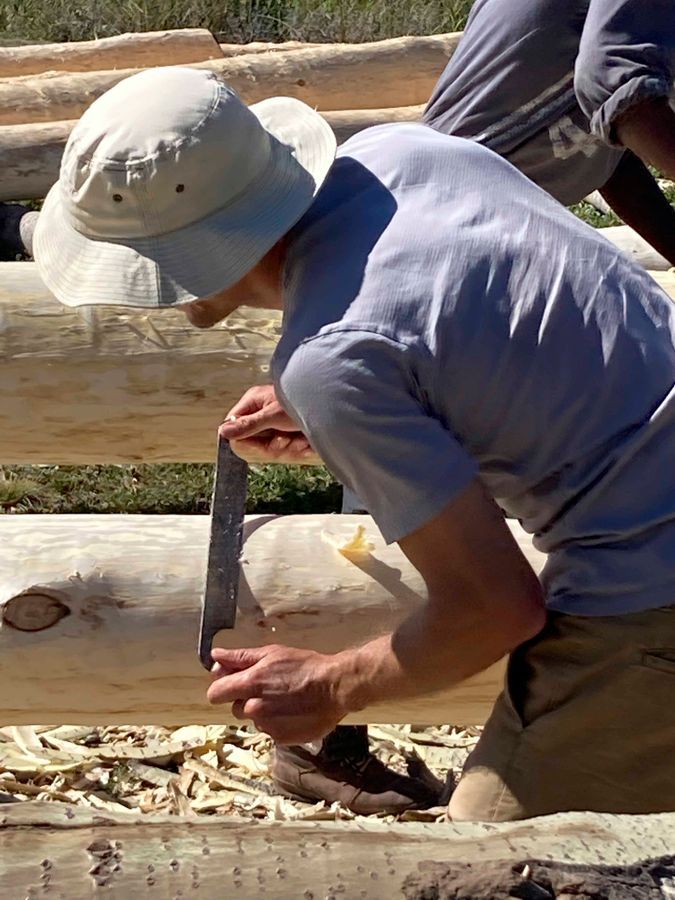
We started the debarking process once we had about 20 trees on the debarking station. The idea was then to supply the debarking station with felled trees on an ongoing basis. This routine worked quite well, although we soon realised that the debarking took longer than anticipated. Also, we split the debarking team so that we could fell and debark simultaneously. Soon the debarking could not keep up with the felling of the trees. So, we created another site where we could store the felled trees and then supply the debarking station from there. This relieved the pressure for the peelers, but we were all too aware that the fresher and wetter the tree, the easier it was to debark.

